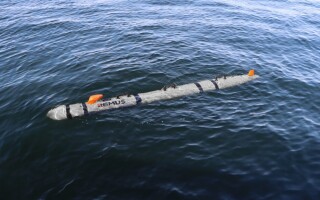Point Mugu Sea Range adds system to aid in weapons test, development
NewsSeptember 11, 2017

NAVAL AIR WARFARE CENTER WEAPONS DIVISION, POINT MUGU, Calif. The U.S. Navy's Point Mugu Sea Range has adopted a new directed energy test atmospherics-based system that may turn out to revolutionize the Navy's ability to measure and predict weather conditions on the range, which is a critical factor in supporting the test and development of weapons systems.
The Integrated Atmospheric Characterization System (IACS) is a land-based survey tool that measures complex weather features and conditions that could affect laser propagation, such as optical turbulence, transmissivity, and water vapor levels. IACS uses two LIDAR [light detection and ranging] systems to help measure and characterize atmospheric conditions, determine boundary heights, and serve as a “super ceilometer,” providing finely resolved cloud base height and tilt measurements for test engineers and operators.
“IACS give us the ability to characterize the atmosphere at sea level to a much greater degree than other instrumentation,” said John Gurka, head of the Sea Range Operations Division at Naval Air Warfare Center Weapons Division. “This detailed characterization helps weapons developers and range instrumentation engineers better assess the impact the atmosphere has on the weapons and instrumentation they are developing and testing on the Point Mugu Sea Range.”




